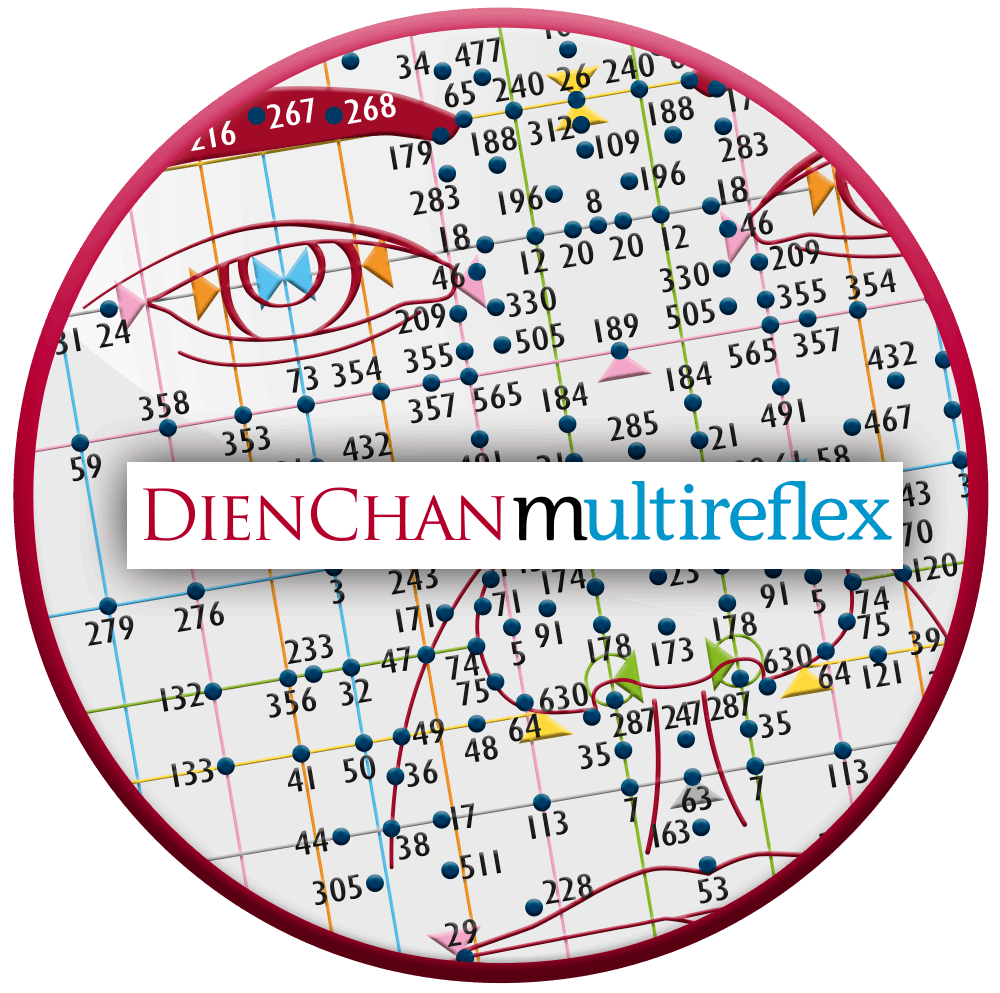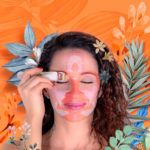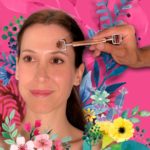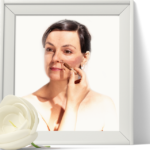Relieving ankylosing spondylitis with Dien Chan: a holistic approach
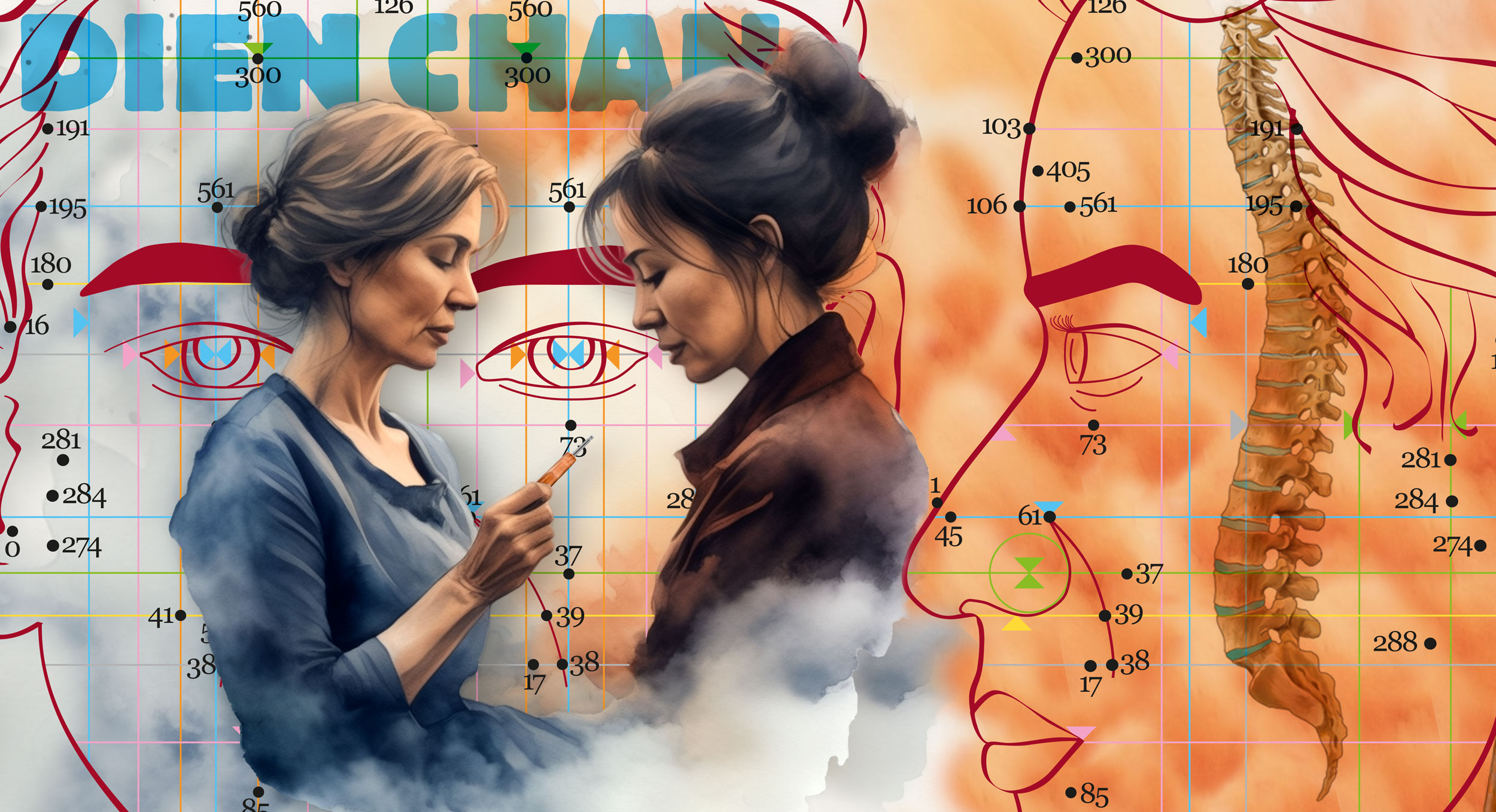
In Dien Chan, every condition is approached holistically, considering the individual as a whole. In this article, we propose an approach to treating ankylosing spondylitis, a debilitating condition often affecting the back and joints. We discuss some fundamental principles of Dien Chan, offering valuable advice for calming symptoms and improving the quality of life for those with this chronic condition.
Let’s develop together a method that, hopefully, will inspire you to achieve effective and lasting relief.
I remind you that using only the name of a pathology, borrowed from Western medicine, can be limiting and sometimes even harmful. Indeed, simply naming a disease does not truly help us if we are not doctors, as we do not know all aspects and implications of this pathology.
It is much more relevant to detail the symptoms suffered by the individual in order to be able to address them one by one. By noting improvements at each stage, we can have more certainty and confirm the choices made to undertake treatment.
Having no medical authority and regarding ankylosing spondylitis, I first sought a definition. Using a precise medical term without understanding its implications can be risky.
Concise definition: Ankylosing spondylitis is a group of chronic inflammatory diseases that primarily affect the joints of the spine and the sacroiliac joints (located in the lower back). It includes several forms, including ankylosing spondylitis, psoriatic arthritis, and spondylitis associated with inflammatory bowel diseases.
So, we will propose a care plan that, although we are not in front of the person, I hope will inspire you.
1| General state
Treating inflammation is crucial and should be integrated into the care plan. However, for this first step, it is important to address the level of stress, fatigue, or emotional state of the individual. Before moving directly to the local step to relieve symptoms, we need to focus on the general state of the person.
It is highly relevant to address the nervous system, even if the person is not explicitly complaining of excessive stress. This will help to calm the brain, making it more receptive to subsequent treatments. [Stress management in this file]
However, if your client is suffering from significant fatigue, it would be more beneficial to energize their Qi. Take advantage of the massage table session to use the Double yang ball nº410 on the back, moving from the lumbar area to the neck. It is also beneficial to accompany each movement on the back with a hairdryer, so that the warm air assists our yang work.
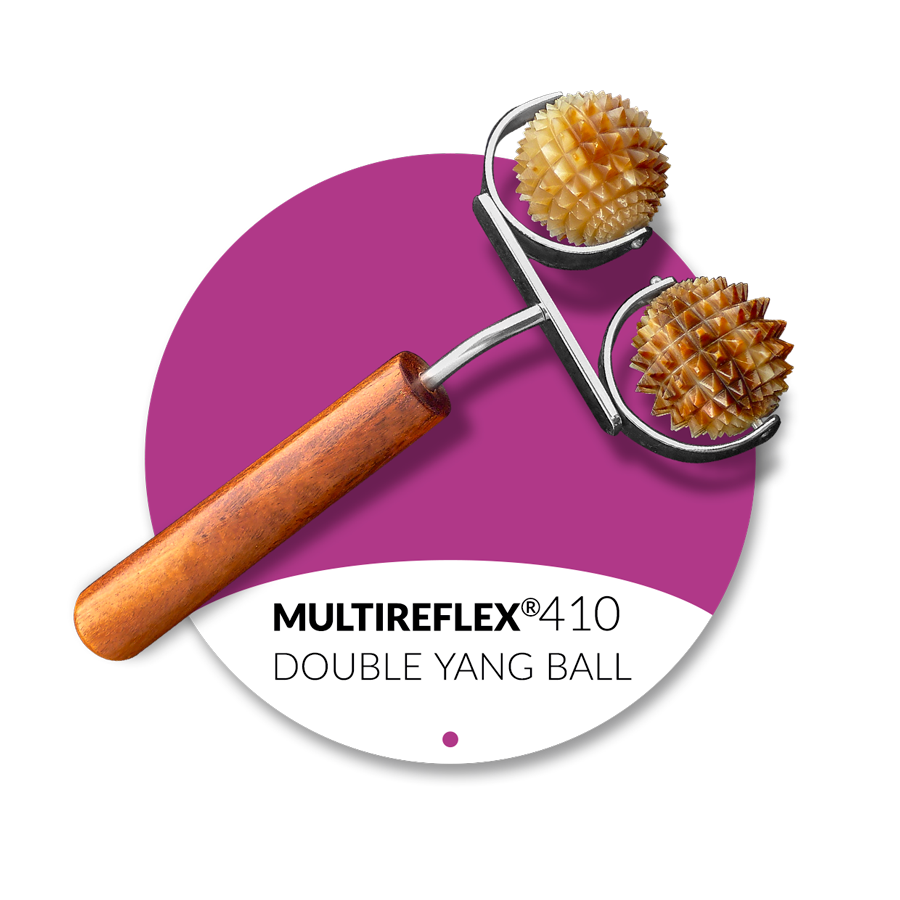
This technique helps to relax the muscles and improve circulation, thereby increasing the effectiveness of the treatment.
2| Bodily step
To choose the most appropriate multireflex tool, it is essential to experiment with different instruments, as inflammation does not always manifest as a hot (yang) expression of the condition. This step allows for the selection of the tool that provides the most relief based on individual needs.
It may be tempting to think that a yin tool will be necessary to reduce inflammation, but it is crucial to test both yin and yang tools. Question your client before and during use to establish which sensation suits them best.
During the back-and-forth movements on the painful area, ask the person to describe their sensations. By noting the level of improvement, you can refine your choice and determine the most appropriate multireflex tool at that time.
Let’s remember that each case is unique, and it is impossible to know in advance which tool will be most effective. It is in this type of reasoning that the “Tuy” of Dien Chan resides. Those who have not yet had the opportunity to train with a certified teacher from ISMDC should not panic.
The “Tuy” is a holistic approach that prevents us from mechanically applying pre-established protocols. In a context where artificial intelligences are taking up more and more space, it is essential to develop our creativity. Everything relies on “self-confidence,” seasoned with “Tuy,” without confusing this with arrogance. This is what we have been teaching since 2002 at ISMDC through our training and publications.
Energy stimulation
Given that ankylosing spondylitis is a chronic condition, it can deplete the body’s overall energy. It’s natural to want to invigorate yang energy, but due to the taxing nature of the disease, it’s crucial not to overstimulate yang, which could exacerbate the pain.
Therefore, it’s preferable to promote a balanced approach without overburdening already inflamed areas. A gentle, yet yang, technique like moxibustion can be beneficial if used with caution. Moxibustion in Dien Chan involves performing delicate, yet precise sweeps with moxa sticks.
[in French] We offer a dedicated eBook on this technique, accompanied by a video demonstrating the proper gestures. [presentation article here]
Meridian stimulation
Take advantage of the bodily step to stimulate the energy of the Bladder meridian, which runs along the spine and legs. This meridian is often involved in joint pain and improves circulation while strengthening kidney energy.
If tolerable, the use of the Big-hammer nº430 is ideal. Follow the meridian pathway from the ankle along the leg, then from the buttocks to the neck by exerting very light percussion. This bodily step requires great delicacy and observational skills. Each person reacts differently, so it is important to monitor the body’s responses and adjust the treatment accordingly.
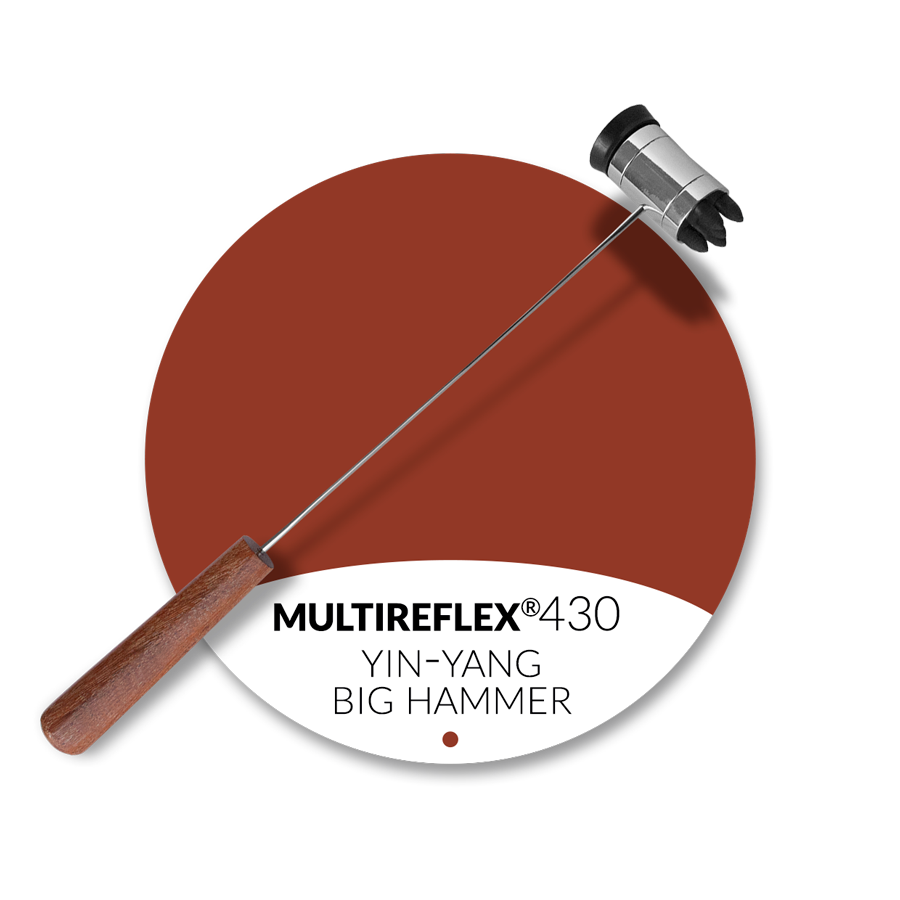
3| Facial reflex step
After alleviating the initial pains during the bodily step, we will continue the Dien Chan care by working on facial reflex diagrams. To do this, we will employ the technique that has yielded the best results in terms of comfort, but with a smaller multireflex tool.
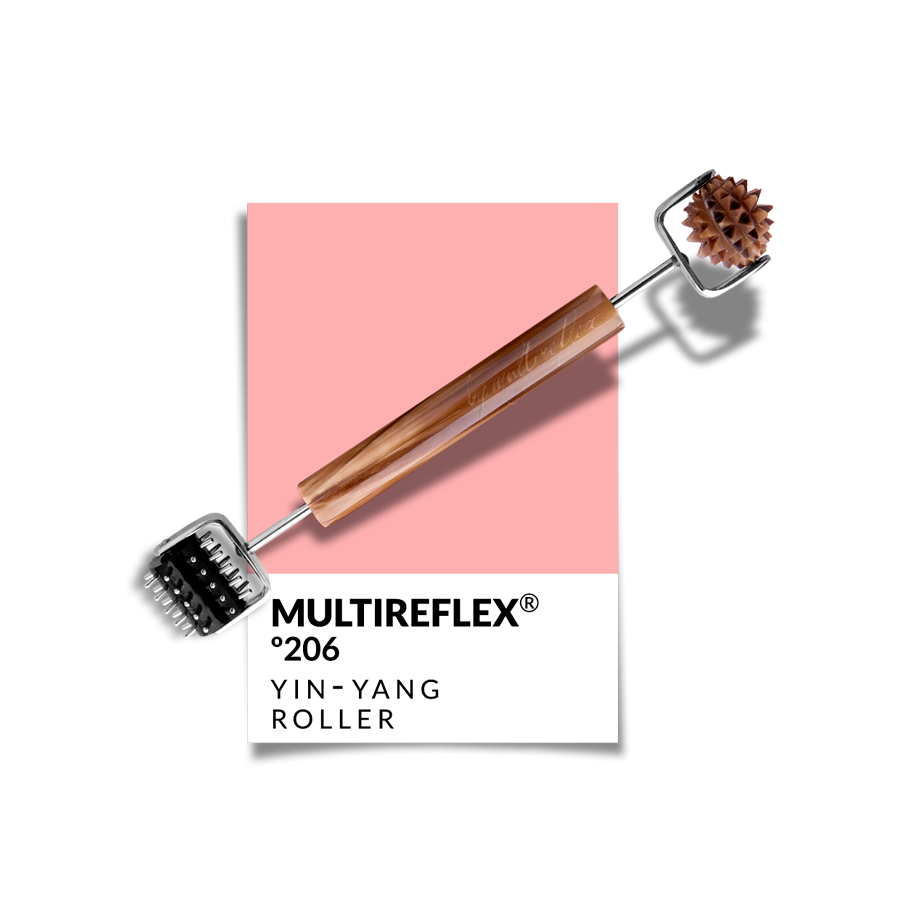
If the Double yang ball nº410 has been the most effective in relieving pain, we can use the small spike ball of the Yin-yang roller nº206. Start with the diagram that seems most suitable and don’t hesitate to change if no positive reaction is observed.
For this type of condition, we often first think of Mr. Yang’s diagram (the red figure) and replicate what we have done on the body, but this time on the face. To do this, make back-and-forth movements with the small yang ball of the Yin-yang roller nº206 starting from the chin (the feet of the red figure) and moving up along his leg following the nasolabial fold. Then, start from the tip of the nose moving towards the glabella to follow his back.
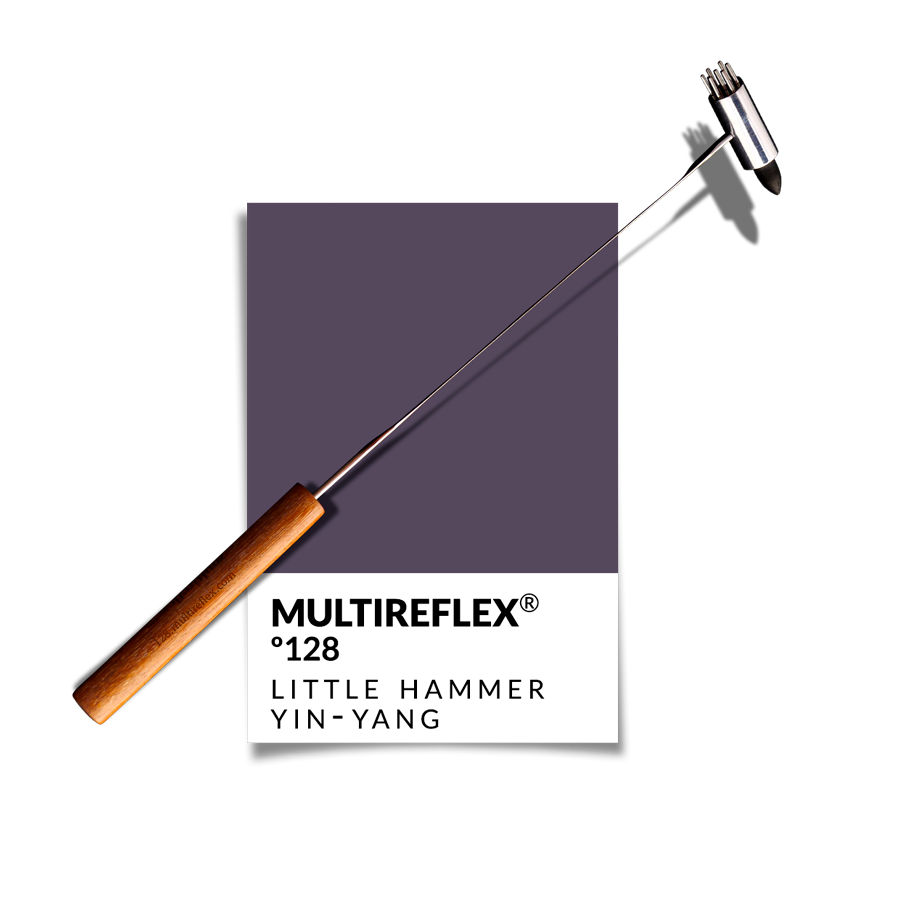
However, do not limit yourself to just this diagram. It is important to test other representations of the back on different diagrams. For example, the “Jockey” diagram (the figure entirely located on the scalp) can be explored using the Little-hammer nº128 or the Comet nº133 (large detector).
As always, between each stimulation, ask the necessary questions to assess the improvement felt. For this type of pathology, it can be challenging to gather results at each step. However, if the person finds the treatment pleasant, it confirms that we are on the right track.
4| Consolidation step
To obtain an appropriate and completely personalized formula, we must first compose a constellation integrating many concepts. It’s difficult to enumerate them all here, but our dedicated eBook on joint disorders contains a multitude of ideas to enrich your management. Let’s review what we’ve seen previously. It involves using bqc·points that act on the involved body area, as well as those that stimulate the energy of the meridians.
I remind you that a constellation is not a definitive formula but a set of bqc·points related to what we want to treat. We will try them out and only retain the most sensitive points. This result will constitute the definitive formula in Dien Chan.
Use the identified bqc·points for their effects on specific body areas and for the stimulation of the involved meridians. Test each point of this constellation and note the person’s responses. The points that show increased sensitivity or provide noticeable relief will be retained to compose the definitive formula.
By consolidating the results of previous steps and adjusting based on observed reactions, we ensure optimal and tailor-made care for each patient.
This method guarantees that the treatment is personalized and adapted to the specific needs of each individual.
Our constellation:
Regarding the back in general: 43· 45· 1· 106· 103· 126· 560· 281· 284· 274·
Joint pain: 37· 16· 61· 50· 41· 156· 288· 38· 561·
Bladder meridian: 85· 21· 191· This meridian runs along the spine and legs, helping to relieve back and joint pain, improve circulation, and strengthen the kidneys, which are often involved in chronic diseases.
Kidney meridian: 17· 45· 85· 73· 300· 0· The kidneys govern the bones and marrow and are often involved in chronic diseases and joint pain.
Liver meridian: 254· 50· 195· The liver regulates the circulation of blood and Qi. It is often involved in inflammatory conditions and in regulating emotions, which can exacerbate pain.
Spleen meridian: 343· 37· 180· The spleen transforms and transports fluids and energy and plays an important role in maintaining the health of soft tissues and joints.
Stomach meridian: 39· 405· The stomach and spleen work together to nourish muscles and tissues, and these points help improve digestion and reduce inflammation.
Here is the final constellation after removing duplicates:
1· 0· 16· 17· 21· 37· 38· 39· 41· 43· 45· 50· 61· 73· 85· 103· 106· 126· 156· 180· 191· 195· 254· 274· 281· 284· 288· 300· 343· 405· 560· 561·
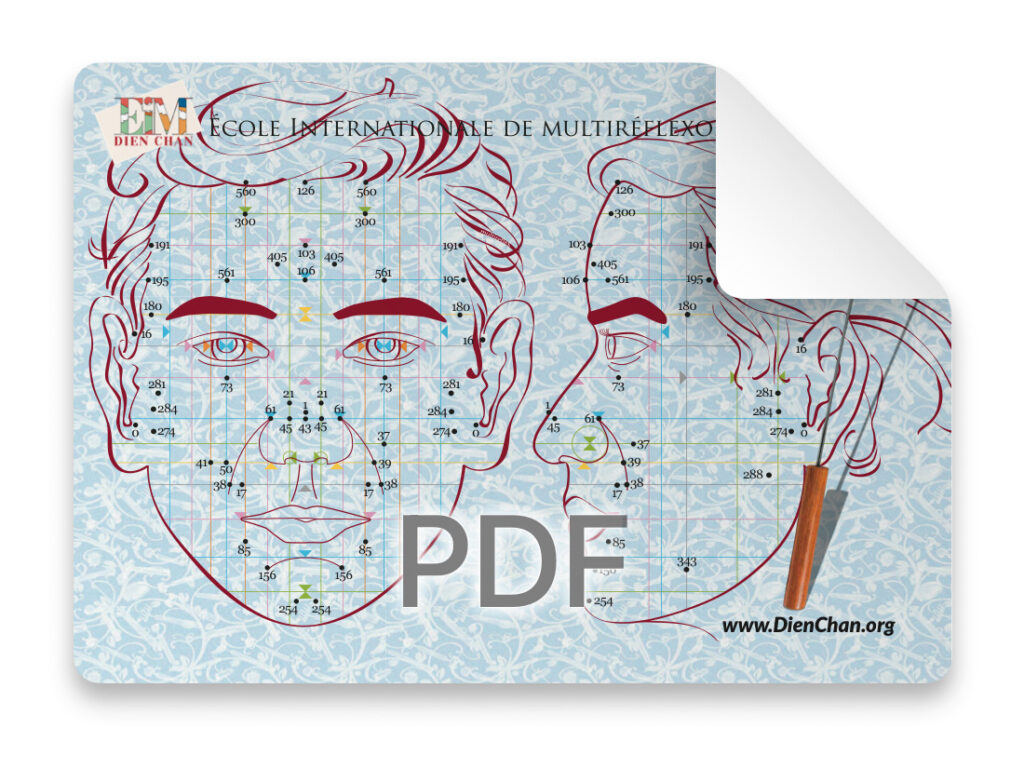
In practice, you should not construct such a large constellation, as you will be inspired by the results gathered during the previous steps.
However, since we are not in the presence of the person, we want to offer you a constellation rich in ideas. The successes achieved during the previous steps will guide you in selecting the points that will provide the most relief and improvement.
This constellation provides you with a wide range of bqc·points to test. By selecting the most sensitive bqc·points, you can refine it to obtain a personalized and optimized formula. This is the best way to express all your talent and to precisely address the condition being treated.
We advise you not to have a formula that is too long, and know that around fifteen bqc·points will be more than enough. Try to order them in a yang manner, starting with the one located lowest on the face and ending with the bqc·point situated towards the forehead.
Feel free to apply small heating patches to the most sensitive points after activating your formula. This is an excellent way to deeply treat chronic conditions. The heating action of the patches allows for gentle yet long-lasting stimulation, and your client can fully benefit from all the advantageous effects of the treatment because —unlike balms— heating patches do not cause cooling of the point by evaporating.
5| Prescription
In addition to the treatment provided during sessions, it is recommended to perform certain exercises at home to reaffirm the effects of the treatment, revitalize the vital energy, and maximize the benefits for the next appointment.
If the use of the Double yang ball nº410 provided significant relief, advise the person to roll the sore body parts every day. This will help maintain the dynamics of blood and lymphatic circulation, thus promoting recovery.
However, if it’s the yin effect that has offered the most satisfaction, it indicates that muscle tension requires specific attention. In this case, encourage the individual to roll the affected extremities with the Double yin ball nº411. Then, recommend regular muscle relaxation exercises to release accumulated tension and promote overall well-being.
If the facial care on the reflex diagram has been particularly effective, recommend the most suitable multireflex tool for their case. In general, the Yin-yang roller nº206 or the Little-hammer nº128 are excellent choices to maintain energy balance and prolong the beneficial effects of the treatment between sessions.
Take a few minutes to show them how to work on the reflex zones without damaging the skin and emphasize the elegance of the gesture so that they understand the importance of mindfulness in care.
Without giving them a lesson, indicate on a single reflex diagram the area to work on and specify that about fifty back-and-forth movements per zone are sufficient whenever pain is felt.
By practicing these exercises regularly at home, the individual can maximize the results of the treatment and contribute to their overall well-being.
In conclusion, Dien Chan offers a comprehensive and personalized approach to treating ankylosing spondylitis and other similar conditions.
By combining body and facial stimulation techniques with multireflex tools and simple home exercises, it is possible to alleviate pain, reduce inflammation, and promote overall well-being.
With regular practice and appropriate support, individuals suffering from ankylosing spondylitis can regain increased comfort and a better quality of life.
